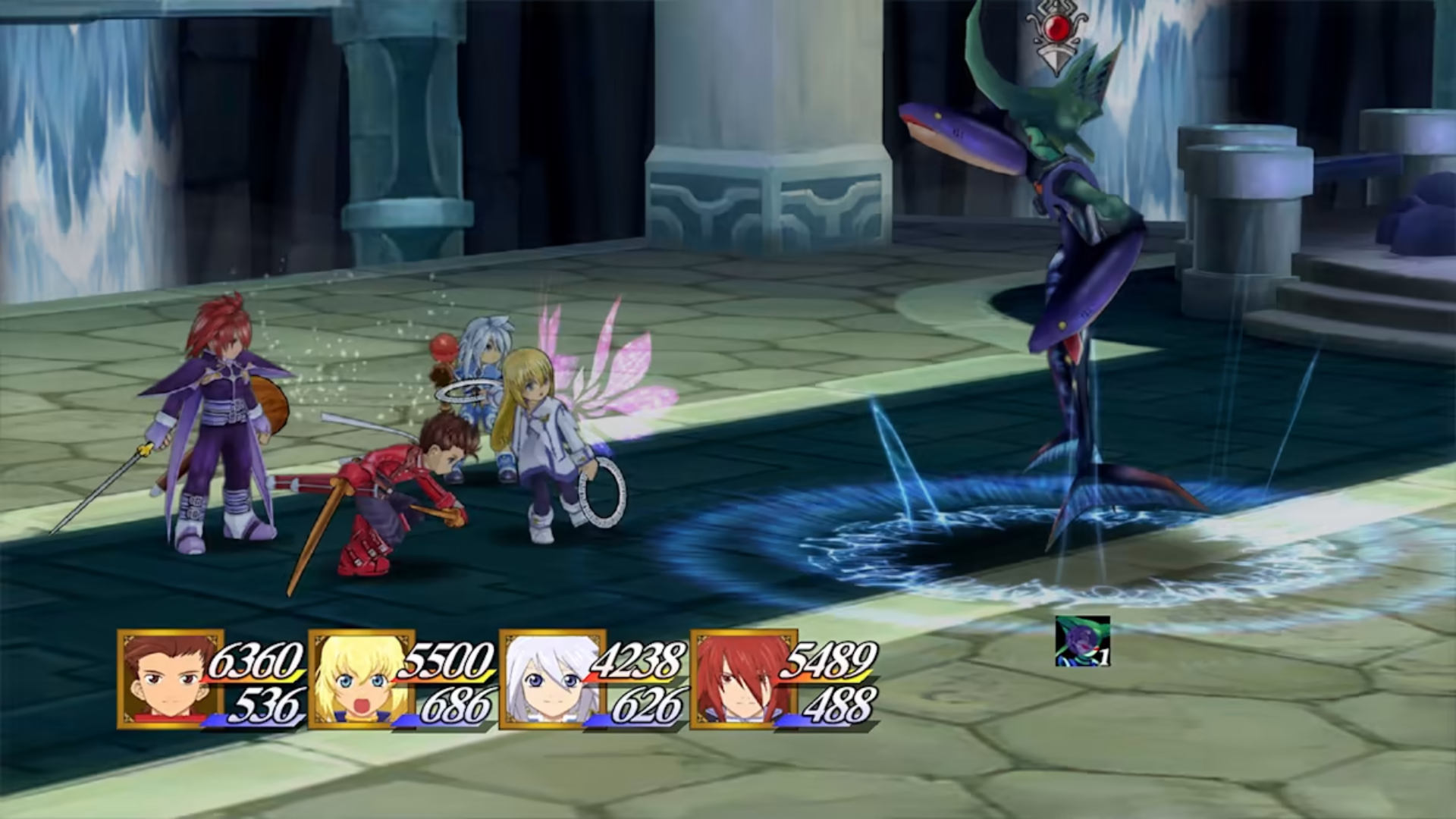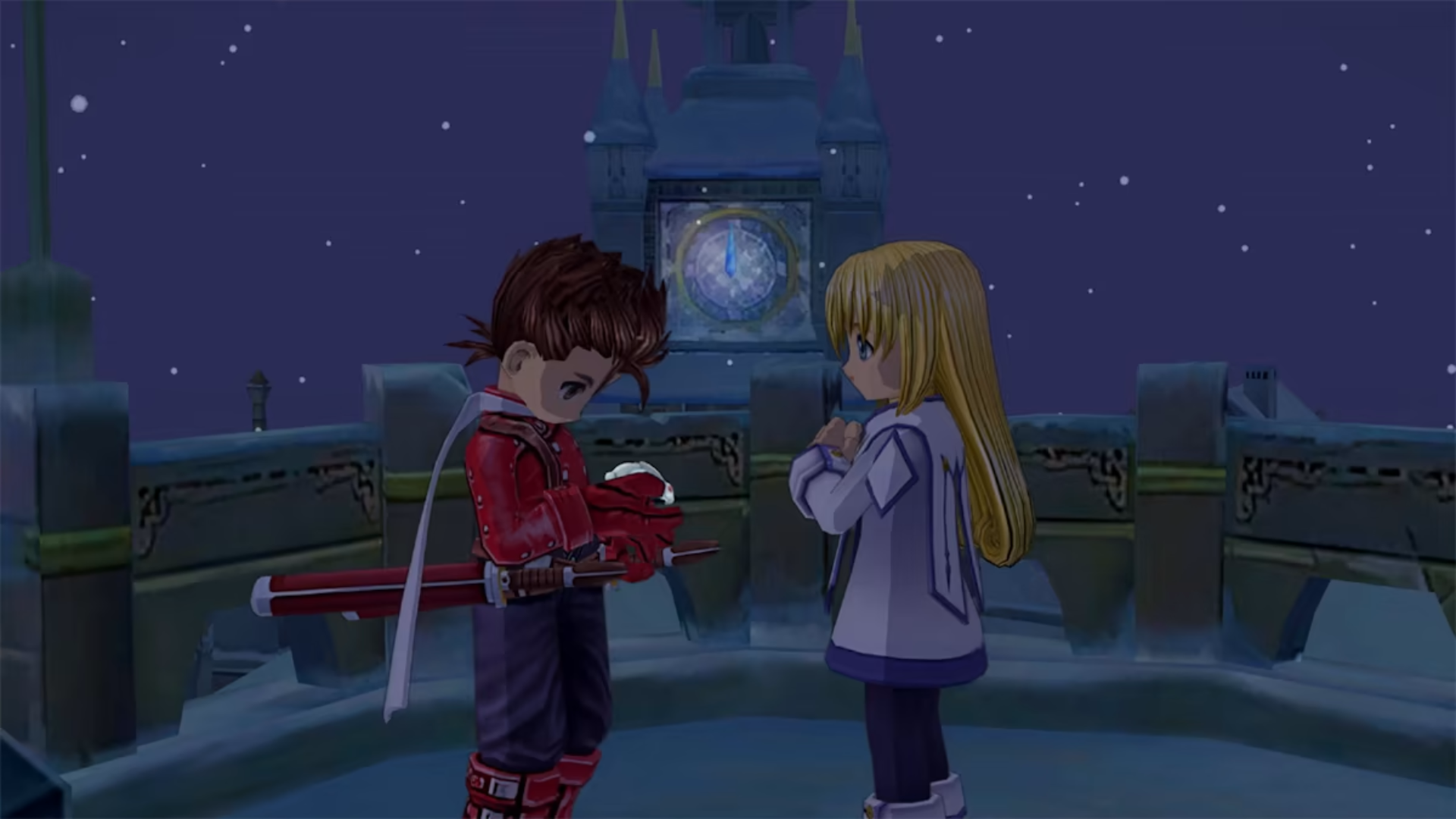In all honestly, Tales of Symphonia Remastered is in a no-win situation. Even if the re-release offered enough features to differentiate it from the 2013 release on PlayStation 3, it cannot escape the shadow of Metroid Prime Remastered.
Unfortunately, this is the same release from ten years ago. At the end of the day, Tales of Symphonia Remastered serves one purpose: put the game into Nintendo Switch. While the game is still an absolute blast to play, and the story isn’t afraid to tackle serious and mature themes, this feels like a missed opportunity by Nintendo and Bandai Namco.
Nearly every strength in this remaster is due to the quality of the source material. The Tales series continually plays second fiddle to other major JRPG franchises like Final Fantasy or, especially recently, Persona. Yet, with its release on the Nintendo GameCube in the summer of 2003, Tales of Symphonia had found an audience. Symphonia blends the best of several genres: the action-adventure feel of Legend of Zelda, the 3D arena combat of Soul Calibur, and the cel-shaded anime style and stories of JRPGs. Together, it results in one of the best RPGs on the GameCube and one of the best RPGs of the console generation period.
Tales of Symphonia Ages Well in Some Aspects, Poorly in Others
Twenty years later, it’s impressive how well the game has aged. Of course, some parts have become dated over time, such as the stiffness of the combat system and the antiquated save system. Still, I was surprised at how easy it was to dive into the game despite its attempts to frustrate me.

There are unfortunate challenges that come with navigating the overworld. On the plus side, being able to avoid enemies means you won’t get bored to death with unavoidable random encounters. On the negative side, the camera system does its best to make the player unable to see where they’re going. It’s frustrating, but something I can overcome.
One thing I can’t overcome is the game’s save points. Sometimes, you’ll lose substantial progress because you either 1) missed a save point, 2) didn’t have the necessary item to unlock a hidden save point, or 3) forgot to access a nearby save point. Combine that with a combat system that, while still engaging and entertaining, is a bit rough around the edges in 2023. As a result, you may have to replay the same 10-15 minutes repeatedly before you finally defeat difficult bosses.
The only way to deal with this issue is to tear down and rebuild the game’s combat system with a modern combat design. The combo system worked for the gaming landscape in 2003, but 2023 games have left it behind. There are awkward pauses between combos where other games would let me keep the combo chain rolling. Your companion AI, surprisingly, goes a great job 95% of the time, and you can set their behaviors to your preferred style. Yet every now and then, a glass cannon character who’s best at range will walk into melee and hit the boss, draw aggro, and get destroyed.
I’m Still Starstruck by Tales of Symphonia
One aspect that does age surprisingly well is the game’s story. There are still cliched anime tropes that will make you roll your eyes. Beyond that, though, the main narrative of Tales of Symphonia still resonates today in 2023. The themes of racism, class equality, and character growth still hit home today. In fact, the story is so strong that it helps carry the game’s frustrating moments.
The biggest reason for the story’s sustained success is the voice acting. The all-star cast features industry veterans Scott Menville, Jennifer Hale, Cam Clarke, and Tara Strong. Their performances help deliver a perfect balance between light-hearted moments and serious setpieces. Furthermore, the voice cast helps empower the characters of Tales of Symphonia. A lot of story and information is thrown at the player, and it all happens somewhat quickly. However, the game’s pacing does well to balance everything thrown at the player. One reason is the juxtaposition of puzzle-solving and enemy encounters.
Neither of these gameplay components are complex, particularly the puzzles. Honestly, they’re pretty simple but do well to let the player breathe and relax before a boss battle awaits. Before long, you’ll fall into a rhythm: follow the new story beats, combat enemies, solve puzzles, defeat the boss, rinse, and repeat. It’s an enjoyable gameplay loop that couples well with an impressive presentation and style.

Sadly, the visual side of the presentation is stuck in the past. One key reason is that Bandai Namco seems keen to continuously port the PS2 version of the game, which is capped at 30 FPS. The GameCube version, on the other hand, runs at 60 FPS. Furthermore, the game received what seems like a minor visual overhaul. It feels crisper and more polished, but the untrained eye will likely not notice any difference. Compare that to, say, I don’t know–Metroid Prime Remastered, which is a work of art. This is where the disappointment comes in.
The Best Part of Tales of Symphonia Remastered Is Tales of Symphonia; The Remastered Feels Like a Misnomer
I’ve spent so much time gushing about Tales of Symphonia because it’s a legitimately great game. Yet I can’t help but wonder how much better this remaster could be if an actual remaster took place here. Not only that but what if they took the time to remake the game’s combat and design for the modern era? What if they gave Tales of Symphonia the Final Fantasy VII Remake treatment? Only, you know, not splitting the game up into several different releases.
The price point of $39.99 indicates that, yes, this is a port first and a remaster, but again, I have to bring up Metroid Prime Remastered. Same price, complete and total remaster that overhauls the game in the best possible way. If Tales of Symphonia Remastered had even a fraction of the effort, it’d be worth it for any and all Nintendo Switch owners to pick up. But, alas, it’s a barebones, disappointing, and lazy way to bring the beloved JRPG to the Switch.

